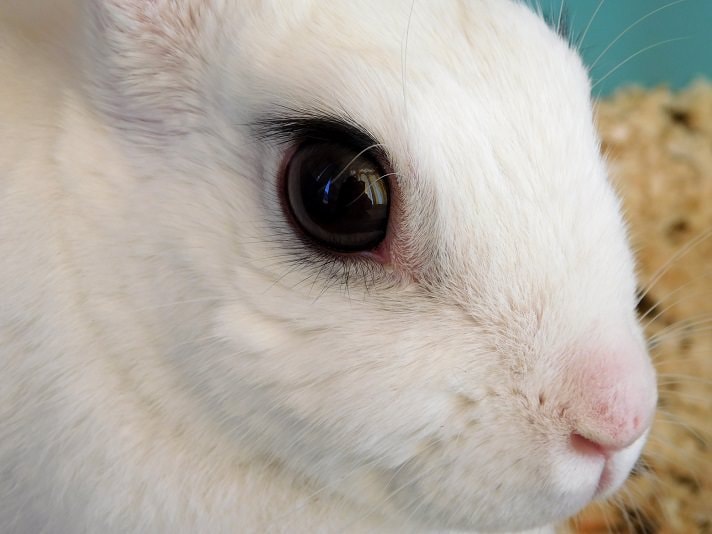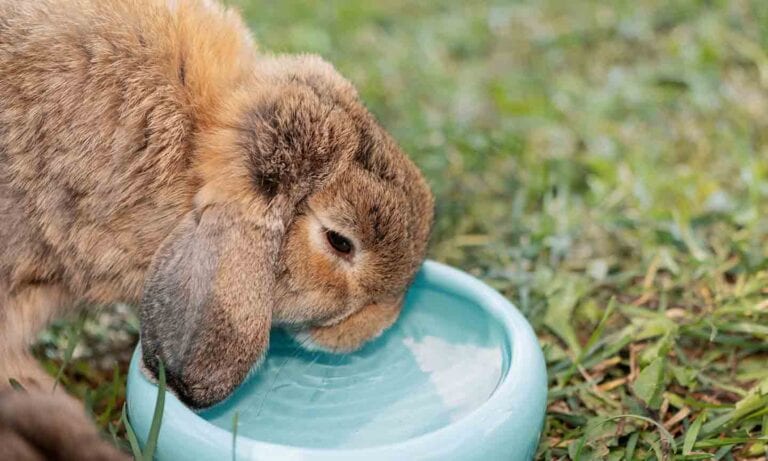Your rabbit’s eye just doesn’t look quite right. Maybe it’s red, or your rabbit’s eye has some kind of discharge. What could it be and should you pick up the phone and call a rabbit-knowledgeable veterinarian or is this something you can handle on your own?
“Because eye disease can progress rapidly,” says Leticia Materi, PhD, DVM, of the Calgary Avian & Exotic Pet Clinic of Alberta, Canada. “An owner should bring their rabbit into the veterinary clinic within 24 hours of noticing the signs.”
A red or irritated eye, an eye with discharge, or a swollen eye can all be indications of a variety of health issues. This is not something that a rabbit owner will be able to diagnose and treat at home.
“If you note redness of the eyes, squinting, pawing or rubbing the eye, or excessive discharge, this could indicate a problem,” says Jennifer Blair, DVM of St. Francis Animal & Bird Hospital in Roseville, Minnesota. “Rabbits can get scratches or ulcerations of their cornea from trauma or irritation from hay or bedding. A protozoal parasite, Encephalitozoon cuniculi, can lead to cataract formation and secondary inflammation of the eye, called uveitis.”
Jennifer Graham, DVM, DABVP (Avian/Exotic Companion Mammal), DACZM, Assistant Professor of Zoological Companion Animal Medicine Department of Clinical Sciences, Tufts Cummings School of Veterinary Medicine explains, “Rabbits can have chronic eye discharge associated with dacryocystitis—inflammation of the tear duct that drains the eye—and also with dental disease, so be aware that in these conditions the eye itself may be normal.
“Rabbits can also have eye discharge or squinting associated with eye infection, trauma, glaucoma or a corneal ulcer,” she continues. “This is a very important condition to address immediately because it is possible for a rabbit to lose vision fairly quickly if untreated disease causes damage to the delicate tissues of the eye.”
Eye discharge is often due to infection of the conjunctiva and/or the nasolacrimal duct, according to Dr. Materi. The conjunctiva is the lining of the inner surface of the eyelids and the nasolacrimal duct is a duct that normally drains tears from the eyes to the nose.
“This can be due to opportunistic infections by bacteria or trauma to the eye, i.e., scratches or bite wounds,” she says. “The rabbits may keep the affected eyes partially or fully closed and the eyes may have sticky discharge, swollen eyelids or appear red.”
Rabbit Eye Infection Treatment
As soon as you notice a problem with your rabbit’s eye, call your small animal veterinarian to find out what she recommends. She will probably tell you to bring your rabbit in for a physical examination. Depending on your rabbit’s symptoms, she may recommend a variety of treatments.
“Often topical antibiotics and/or anti-inflammatory medications will help resolve conjunctival disease,” Dr. Materi says. “When the nasolacrimal duct becomes infected, it often plugs with inflammatory material thus preventing the tears from draining normally. These tears then spill out over the lower eyelid and onto the face. If the nasolacrimal duct is involved, the veterinarian may recommend flushing the duct with a sterile saline solution in order to clear the duct of a buildup of inflammatory products before using medicated drops.”
Dr. Materi says that the veterinarian may recommend submitting the material flushed from the nasolacrimal duct for culture and sensitivity testing in order to determine what types of bacteria are involved and what medications are most appropriate.
“If the disease is due to bacteria,” she says, “there is a chance that it may be contagious to another rabbit. It is important to remember, though, that just because a rabbit has been exposed to a bacterium it does not automatically mean it will come down with disease. If that rabbit has a healthy immune system it may fight off the infection on its own.”
By: Melissa Kauffman
Featured Image: via Marcotrapan/iStock/Thinkstock
Share:









